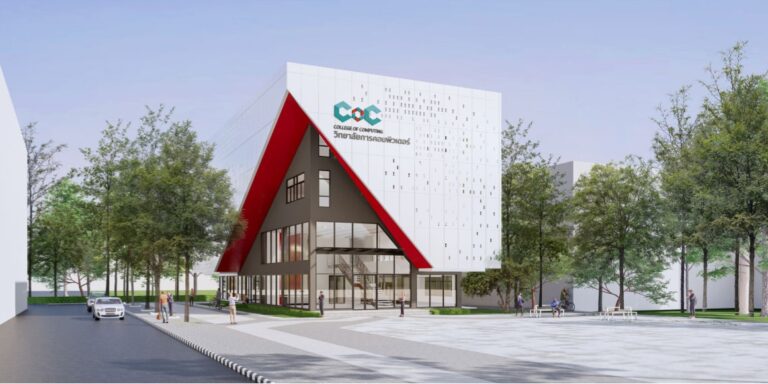Management Practices and Strategic Approaches

Management Practices and Strategic Approaches
College of Computing: Strategic Overview
The College of Computing is dedicated to developing knowledge in computing and digital technologies to meet the evolving needs of industry and the future labor market. Its management approach and strategic initiatives aim to enhance the College’s international competitiveness and produce high-quality graduates who are creative, skilled, and capable of developing innovations with practical applications. The key strategic directions are as follows:
1. Developing Industry-Relevant Curricula
The College emphasizes continuously updating and improving curricula to align with emerging technologies, particularly in sectors aligned with the New S-Curve industries such as AI, Big Data, Blockchain, Cloud Computing, and Cybersecurity.
Implements 100% Active Learning to promote hands-on, practical learning, enabling students to develop analytical and problem-solving skills effectively.
Promotes Work-Integrated Learning (WIL) by requiring internships in industry for at least 50% of professional courses, providing students with real-world experience.
Collaborates with industry partners to design Sandbox Models, especially in advanced skill areas such as AI, integrating university-based learning, online courses, and workplace training.
2. Creating an International Learning Environment
Expands opportunities for student and faculty exchanges through partnerships with leading international universities, developing Exchange Programs, Dual Degree Programs, and Joint Research Projects.
Aims to increase the number of international students and faculty participating in the College through Visiting Professor and Research Internship programs.
Upgrades facilities to accommodate international participants, including English-language program websites, bilingual signage, and digital guidebooks.
Implements marketing strategies to promote programs internationally by participating in education fairs and global outreach initiatives to attract foreign students.
3. Fostering Creativity and Entrepreneurship
Encourages students to engage in Startup & Innovation-based Learning, developing projects that can evolve into marketable products or services.
Establishes funding support for student projects to promote the creation of innovations that address industry or community challenges.
Collaborates with investor networks and business incubators to guide students in transforming projects into viable businesses.
Supports competitions and hackathons such as AI Challenges, Cybersecurity Hackathons, and Robotics Competitions, enabling students to develop skills and achieve internationally recognized accomplishments.
4. Advancing Research and Scholarly Work Internationally
Targets increasing the number of research publications indexed in Scopus and Web of Science at a ratio of at least 2:1 per faculty member, with over 50% in Quartile 1 journals.
Encourages interdisciplinary research collaborations with fields such as Engineering, Medicine, and Business Administration.
Integrates academic services with research to address industry and community challenges, e.g., AI systems for tourism businesses or IoT applications in urban energy management.
Provides financial incentives and awards for high-quality research, including publication support and recognition for outstanding researchers.
5. Enhancing Infrastructure and Learning Resources
Modernizes classrooms and computer laboratories, including AI Labs, Data Science Labs, and Cloud Computing Labs.
Develops Creative Spaces and Co-working Spaces to serve as hubs for group work and idea exchange.
Offers diverse scholarships, including financial aid for underprivileged students, research project funding, teaching assistantships, and support for academic competitions.
6. Promoting Efficient and Agile Management
Implements digital management systems to reduce paperwork and streamline operations.
Analyzes and eliminates unnecessary expenses to increase budget allocation for personnel development and research.
Plans proactive marketing strategies to publicize programs and activities through social media, webinars, and alumni networks.
Develops human resources by increasing the number of faculty with academic promotions and supporting international teaching competency certifications (e.g., UK-PSF).

